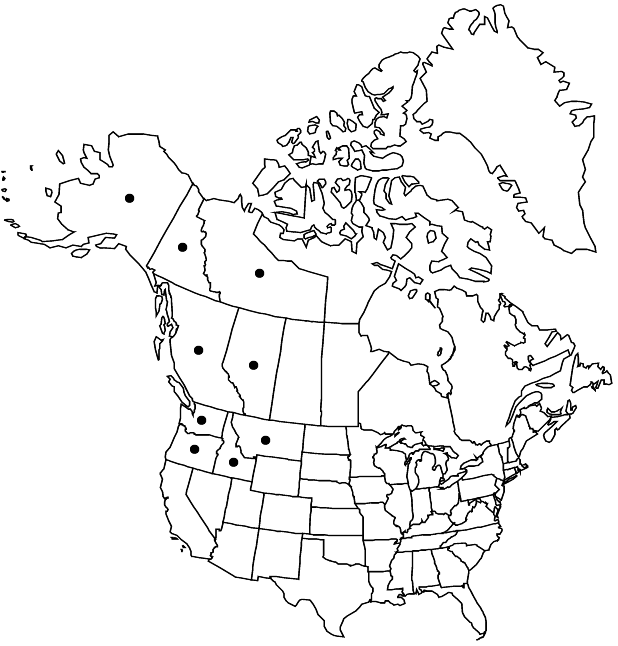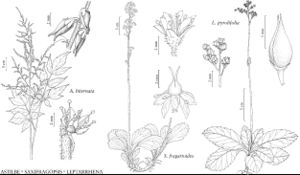Leptarrhena pyrolifolia
in A. P. de Candolle and A. L. P. P. de Candolle, Prodr. 4: 48. 1830 ,.
Leaf-blades dull, pale green abaxially, shiny, dark green adaxially, leathery, basal blade (1–) 2.5–9.5 × (0.4–) 1–4.5 cm. Inflorescences pedunculate, 1–12 cm, glandular to stipitate-glandular, proximal branches sometimes remote, especially in fruit; bracts sometimes subtending pedicels, scalelike. Flowers: hypanthium shallowly campanulate, 0.3–0.6 × 1.2–1.8 mm, glandular to stipitate-glandular; sepals triangular to ovate, 0.8–1.5 × 0.7–1.1 mm, margins entire, apex rounded or retuse, glabrous or sparsely stipitate-glandular; petals narrowly spatulate or oblanceolate, 1–2.2 × 0.4–0.7 mm, margins entire; stamens exserted; filaments 0.8–1.5 mm; anthers 1-locular, round to transversely elliptic, 0.1–0.2 × 0.2–0.3 mm, dehiscent by broad, terminal openings; pistils 2–3 × 1–1.8 mm; styles slightly spreading, cylindric. Capsules erect, green, red, or purple, narrowly ovoid, tips divergent, 6–9 mm. Seeds 80–120, 3.2–4.8 × 0.4–0.6 mm, ends tapered. 2n = 14.
Phenology: Flowering Jun–Sep.
Habitat: Wet meadows, stream banks, bogs, seepage areas, wet cliffs and talus slopes, heathlands
Elevation: 0-2300 m
Distribution

Alta., B.C., N.W.T., Yukon, Alaska, Idaho, Mont., Oreg., Wash.
Discussion
The Aleuts of Alaska use an infusion of Leptarrhena pyrolifolia leaves to treat influenza, and the Thompson Indians of British Columbia apply a poultice of chewed leaves to wounds (D. E. Moerman 1998).
Selected References
None.
Lower Taxa
"full" is not a number.
